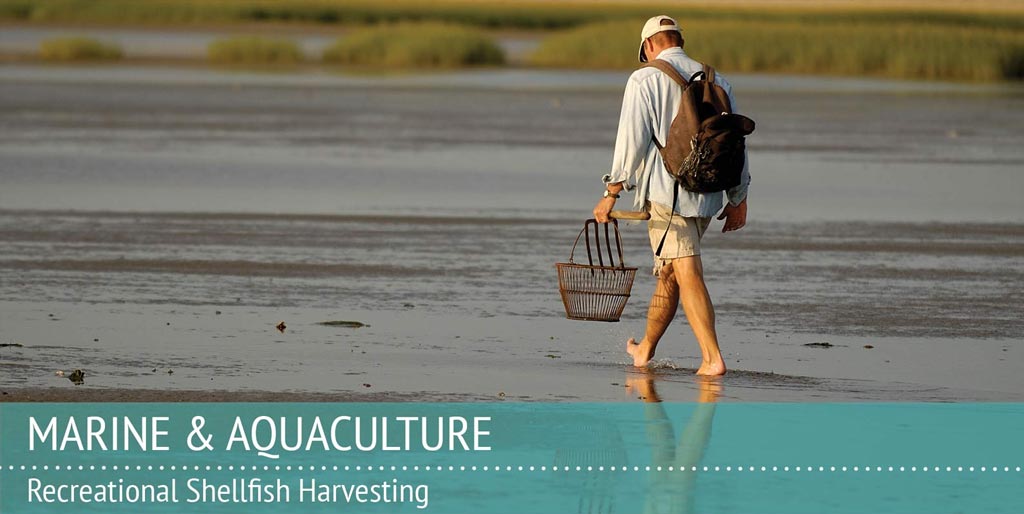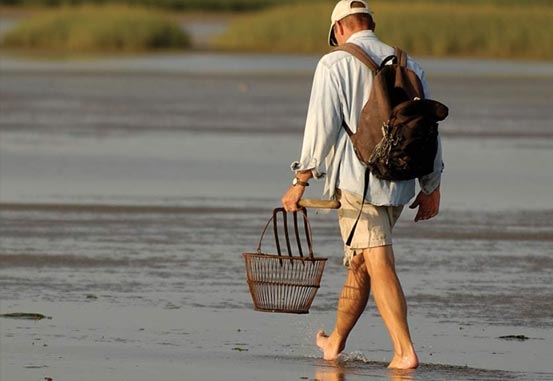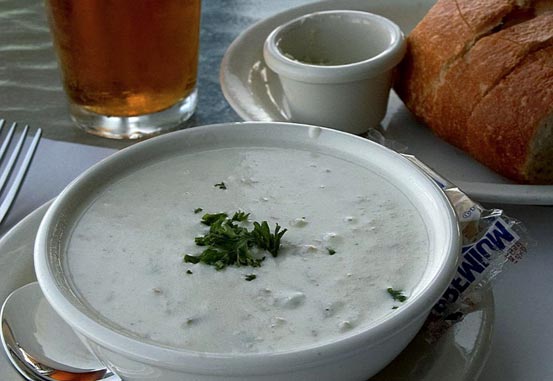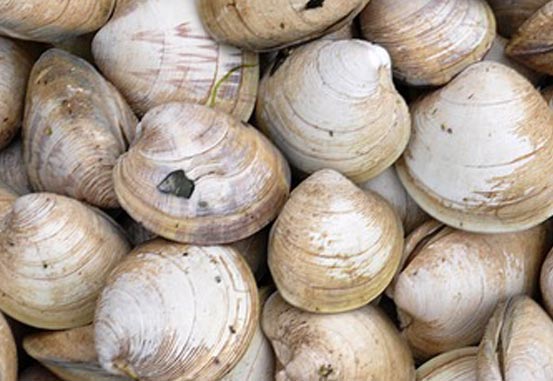
Shellfish in Home

Safe Handling, Storing, and Cooking Practices
Shellfish contain high-quality protein and other essential nutrients and are an important part of a healthful diet. As with any type of food, however, it is important to handle seafood safely in order to reduce the risk of foodborne illness. Follow these basic food safety tips for selecting and storing shellfish — and you and your family can safely enjoy the fine taste and good nutrition of local seafood.
In Massachusetts, shellfish harvest is managed by each coastal town with oversight from the State Division of Marine Fisheries and the Department of Public Health. The most current harvest regulations can be found wherever you purchase your harvest permit.
To keep shellfish harvest safe, the state maintains strict water quality guidelines for opening and closing areas to harvest and has an active testing program to ensure these guidelines are met. General water classifications from the state can be seen on the list of Designated Shellfish Growing Areas. Your town Shellfish Department can provide guidance on areas open and closed to harvest at what times of the year. Always consult these town regulations before shellfishing.
Once you have your shellfish, it is important to keep them cool for the freshest safest product available. For recreational harvesters, the best you can do is be prepared with a cooler and some ice to hold your catch immediately after harvest, especially in the warmer months. Consult the brochure Safe Seafood Series – Shellfish Harvest for further guidelines.
Commercial harvest is regulated with the National Shellfish Sanitation Plan (NSSP) through the MA Division of Marine Fisheries and Department of Public Health. The most current regulations are available through these agencies or your local shellfish officer, with the safest practice being cooling shellfish as soon as possible following harvest.
The coastal waters of Massachusetts are home to a wide variety of high quality shellfish and many are readily available for purchase throughout the year. Molluscan shellfish like clams, oysters, or mussels are usually sold live so special care should be taken to purchase them fresh and take steps to keep them that way for the best seafood experience.
Check out the brochure “Tips for Fresh and Tasty Shellfish – Handling Storage and Cooking” for the details. The basics are:
- Purchase shellfish from a reputable dealer
- Only purchase shellfish which appear fresh and alive
- Keep shellfish cool (refrigerator temperature is good) and covered with a moist towel (if possible) from the time of purchase until consumed or cooked
- Avoid raw shellfish if you are immunocompromised or at high risk for food borne illness
The FDA has placed people with certain conditions at high risk for food borne illness including the potential for Vibrio related gastro intestinal illness from raw shellfish. These conditions include low stomach acidity and risk factors that may compromise the immune system including: liver disease, alcoholism, cancer, diabetes, chronic kidney disease, AIDS, or use of steroid or immunosuppressive drugs. If you think you may have an immunocompromised condition consult a doctor before consuming raw shellfish.
Cooking shellfish to 145°F will destroy potential illness causing bacteria, so anyone can enjoy the special flavors and health benefits of shellfish through any of a wide variety of recipes for cooking shellfish.
Need some help learning to shuck an oyster or clam? These demonstrations are helpful:
Recipes abound on the web for shellfish! Here are some local suggestions to start.
SAFE SEAFOOD SERIES
PDF guides with instructions and recommendations on the safe handling, preparation, and nutrition of Cape Cod shellfish.
Shellfish Harvest
Are you curious about how to harvest shellfish and where to go? Check out this brochure on safe harvesting tips.
Safe Cooking
Have questions about how to safely store, prepare, and cook your shellfish? Check out this guide.
Nutrition Facts
Want to see a nutritional profile of different shellfish species harvested in Massachusetts? Read this guide.






